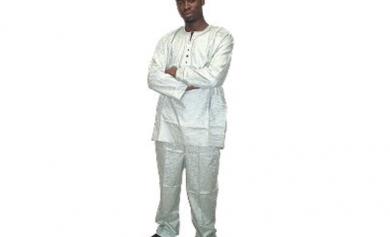
Dressing is as old as man is and is part and parcel of human existence. There is no culture, tribe or race, nor religion that forbids dressing. Dressing is a central symbol of the group and society an individual belongs to; by one’s dressing, people can identify an individual, his or her tribe and status in the society.
Some individuals have chosen a particular pattern and colour of dressing for wherever they go or whatever function they attend and are therefore known by it. In other words, they have a particular dress signature.
In Nigeria and other parts of the world, public figures who have distinct dress signatures readily come to mind and one often wonders, is it deliberately done just to attract attention to themselves, or are there some other reasons for the peculiar choice of attire?
Kingsley Madugba, a journalist, says the reason is not farfetched, “I think it’s simply that such persons want to appear different anywhere, anytime and be known by that. The uniqueness they intend to portray to the public is the style or maybe colour of their choice, while some choose a particular dress signature to identify with the social group they belong to.”
Mrs. Aaiong Ekpa says that some people’s choice of a dress signature is influenced by a mentor or some person they admire. “Such people may choose to dress like their mentors do. Also, they might be influenced by the society they live in,” Mrs Ekpa says.
Mr. Henry Bassey, a civil servant says, “It is a basically a person’s choice. They simply want to be different in appearance and also project the region of the country they come from, like Mr. President, while others want to identify with the group or social organisation they belong to.”
Ajayi Idowu, a medical practitioner, says that a dress signature is not always a thing of personal choice. “As a medical doctor, we have a dress signature dictated by the profession. You dress to show who you are and dress to suit your job,” Idowu states.
The president of the Federal Republic of Nigeria, Dr. Goodluck Ebele Jonathan is a good place to start. Once you see that traditionally South-South outfit (etibor), complete with the hat, you know you’ve seen the president. Whatever the function, wherever the place – at home or abroad – President Goodluck Jonathan’s dress signature stands him out, especially when he’s abroad and among his western attired counterparts.
Expectedly, many Nigerians have embraced this style of dressing also, even when they are not of South-South extraction. But once you see someone dressed that way, the first person that comes to your mind is the president. He wore it to the White House in the USA to see President Barack Obama and recently at the UN General Assembly in New York.
The former speaker of the House of Representatives, Hon Dimeji Bankole, the youngest speaker ever of the lower chamber of the National Assembly was always dressed in white kaftans and we all knew him for that. He was never seen in anything but a white kaftan and cap – except for on the day of his arrest from his residence in the highbrow area of Asokoro, Abuja. For many Nigerians, that was the first day he was seen not in white (pictures in the press showed him in jeans and a T-shirt) and without a cap.
He must have sent for his signature outfit though for subsequently, that’s what he was once again seen wearing.
Nigerian musician Zaaki Azzay’s signature is not just his cap in the traditional Tiv colours of black and white, but also his trademark torchlight. Always switched on, whether he’s on stage performing or being interviewed, once you see a torch switched on in broad daylight, you know who’s holding it.
Professor Wole Soyinka is not only distinguishable by his being a literary giant, icon and Nobel laureate, but also by the fact that in spite of the many accolades, he dresses very simply and always has. He does not wear the attire of his native Yoruba land, neither does he wear a suit; a simple top and pair of trousers, but there has also always been his signature white afro and ample beard. Distinguished educationist of the old Western Region, the late Dr. Tai Solarin, was also always known for his simplicity in dressing. A white shirt and a pair of shorts, with a pair of sandals to match was what he was known with until his demise, even at public functions.
And this would not be complete without mention of ‘The King of Pop’, the late Michael Jackson. Famous as a musician and dancer like no other, whose influence still spans generations and the whole world, just as his dexterity, creativity and skill will never be forgotten, neither will his trousers that always came just short of his ankles and the white socks they revealed.
?

